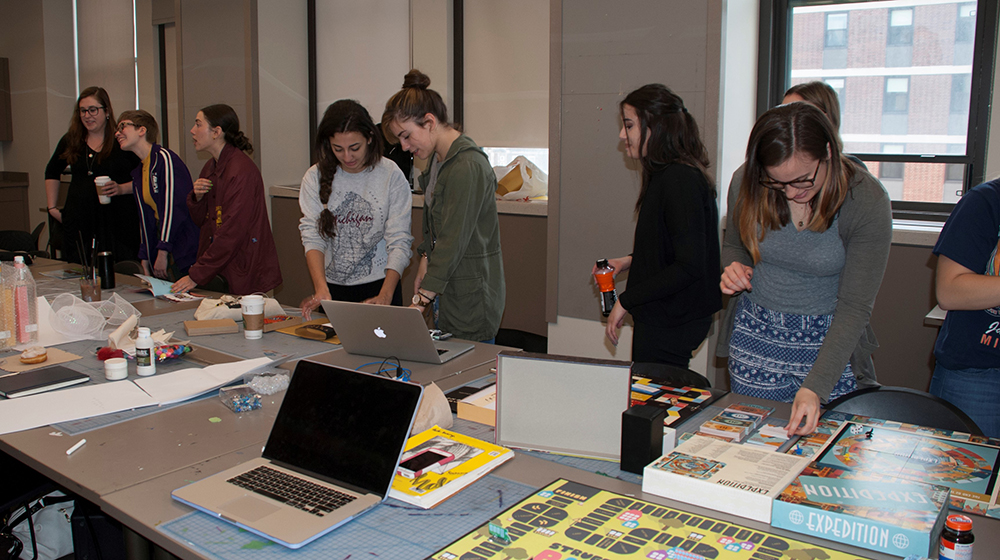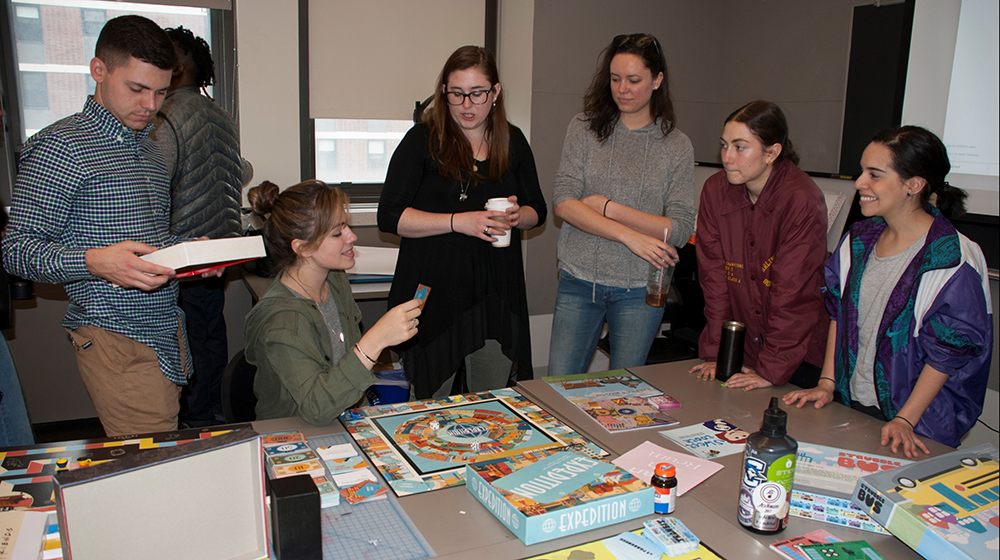Major in Visual Communication

Visual Communication means the communication of information and ideas through a combination of text and image. Graphic designers use these elements to organize complex information in order to persuade, to entertain, and to educate a diverse audience. They work collaboratively with professionals in other fields to help meet these goals, building careers wherever communication is important.
The visual communication program in the Fine Arts Division at Loyola University Chicago prepares students to enter the workforce as design professionals, with graduates employed in graphic design studios, internal design teams, branding firms, cultural institutions, and other creative agencies. Students learn graphic design history, theory, and practice, in a rigorous program that covers the essentials needed by professionals. Graduates of the program have career opportunities in branding and corporate identity, advertising, web design, motion graphics, interface design, package design, mobile interactive design, digital product design, exhibit design, print and publication design, and more.
The history of graphic design is closely interwoven with the history of art, from the development of writing and record-keeping, to the invention of printing processes that were used by fine artists who also designed advertising posters, through the Bauhaus School and up to the present day when the computer has become a common tool for art and design. Allied studio art and art history programming provides opportunities for the development of an interdisciplinary approach, and a required internship gives students hands-on experience in the field.
A total of 45 credit hours are required for the major in Visual Communication. The curriculum builds a foundation that enable students to pursue a broad range of career paths.
For more information about Visual Communication careers, click here.
Learning Outcomes
Upon completion of this program, students will be able to demonstrate:
- An understanding of the role of visual communication in the culture at large
- An understanding of and experience in the variety of forms of visual communication from print to digital media, mastering the basics of visual form, color, typography, photography, layout, and interactive media
- Technical skills used to produce visual communication digitally and by hand
- Knowledge of key historical periods in the history of graphic design
- Skills in critical thinking, written and oral communication, visual literacy, and the conceptualization of self-developed projects
- Readiness for a career through a capstone project, an internship experience, and the preparation of a portfolio and related professional documents
Quick Links

Visual Communication means the communication of information and ideas through a combination of text and image. Graphic designers use these elements to organize complex information in order to persuade, to entertain, and to educate a diverse audience. They work collaboratively with professionals in other fields to help meet these goals, building careers wherever communication is important.
The visual communication program in the Fine Arts Division at Loyola University Chicago prepares students to enter the workforce as design professionals, with graduates employed in graphic design studios, internal design teams, branding firms, cultural institutions, and other creative agencies. Students learn graphic design history, theory, and practice, in a rigorous program that covers the essentials needed by professionals. Graduates of the program have career opportunities in branding and corporate identity, advertising, web design, motion graphics, interface design, package design, mobile interactive design, digital product design, exhibit design, print and publication design, and more.
The history of graphic design is closely interwoven with the history of art, from the development of writing and record-keeping, to the invention of printing processes that were used by fine artists who also designed advertising posters, through the Bauhaus School and up to the present day when the computer has become a common tool for art and design. Allied studio art and art history programming provides opportunities for the development of an interdisciplinary approach, and a required internship gives students hands-on experience in the field.
A total of 45 credit hours are required for the major in Visual Communication. The curriculum builds a foundation that enable students to pursue a broad range of career paths.
For more information about Visual Communication careers, click here.
Learning Outcomes
Upon completion of this program, students will be able to demonstrate:
- An understanding of the role of visual communication in the culture at large
- An understanding of and experience in the variety of forms of visual communication from print to digital media, mastering the basics of visual form, color, typography, photography, layout, and interactive media
- Technical skills used to produce visual communication digitally and by hand
- Knowledge of key historical periods in the history of graphic design
- Skills in critical thinking, written and oral communication, visual literacy, and the conceptualization of self-developed projects
- Readiness for a career through a capstone project, an internship experience, and the preparation of a portfolio and related professional documents

